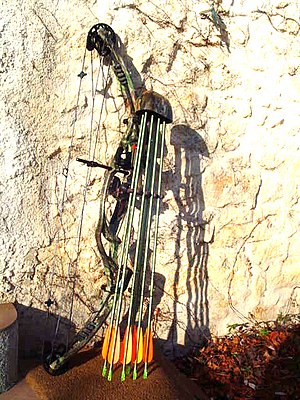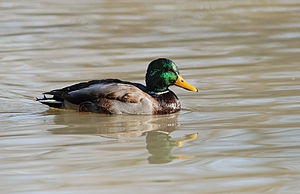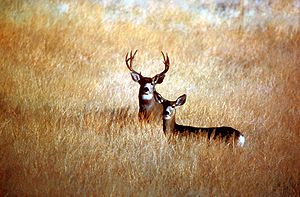 Image via Wikipedia
Image via WikipediaMany seasons open during holidays; 2011 hunting license required in January
PRATT — Many Kansas hunters look forward to the Christmas and New Year holidays as an opportunity to get outdoors and enjoy some of the best hunting of the season. Early January antlerless deer seasons are especially popular for hunters who have not filled a permit or who want to put more deer in the freezer. Unfilled permits purchased in the fall of 2010 are valid for these seasons, but all hunters should remember that a 2011 Kansas hunting license is also required once the new year begins.
PRATT — Many Kansas hunters look forward to the Christmas and New Year holidays as an opportunity to get outdoors and enjoy some of the best hunting of the season. Early January antlerless deer seasons are especially popular for hunters who have not filled a permit or who want to put more deer in the freezer. Unfilled permits purchased in the fall of 2010 are valid for these seasons, but all hunters should remember that a 2011 Kansas hunting license is also required once the new year begins.
For outdoorsmen and women, this is a special time to go afield in pursuit of their favorite game, not just deer. Cool weather often makes game easier to locate, and competition for places to hunt is lighter than earlier in the seasons. For those looking for a good holiday hunt, the following season dates remain or will be open in late 2010 and into 2011:
- Fall turkey — Dec. 13-31 and Jan. 10-31, 2011;
- Archery Deer — Sept. 20-Dec. 31;
- Extended Firearm Season (whitetail antlerless only, open statewide) — Jan.1-9, 2011;
- Special Extended Firearm Season (whitetail antlerless only, units 7, 8, and 15 only) — Jan. 10-16, 2011;
- Extended Archery Season (whitetail antlerless only, Unit 19 only) — Jan. 10-Jan. 31, 2011;
- Exotic Dove (Eurasian collared and ringed turtle doves only) — Nov. 20-Feb. 28, 2011;
- Ducks, Early Zone — Dec. 18-Jan. 2, 2011;
- Ducks, High Plains Zone — Oct. 9-Jan. 3, 2011 and Jan. 22-30, 2011;
- Ducks, Late Zone — Oct. 30-Jan. 2, 2011 and Jan. 22-30, 2011;
- Canada Geese (including Brant) — Nov. 10-Feb. 13, 2011;
- White-Fronted Geese — Nov. 10-Jan. 2, 2011 and Feb. 5-13, 2011;
- Light Geese — Nov. 10-Feb. 13, 2011 and by special conservation order from Feb. 14-April 30, 2011;
- Pheasant — Nov. 13-Jan. 31, 2011;
- Quail — Nov. 13-Jan. 31, 2011;
- Prairie Chicken — East and Northwest zones, Nov. 20-Jan. 31, 2011 and Southwest Zone, Nov. 20-Dec. 31;
- Squirrel — June 1-Feb. 28, 2011; and
- Rabbits — open year round.
For detailed information on hunting units, bag and possession limits, and other information, consult the 2010 Kansas Hunting and Furharvesting Regulations Summary, available wherever licenses are sold or on the KDWP website,www.kdwp.state.ks.us.






